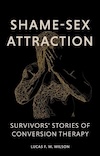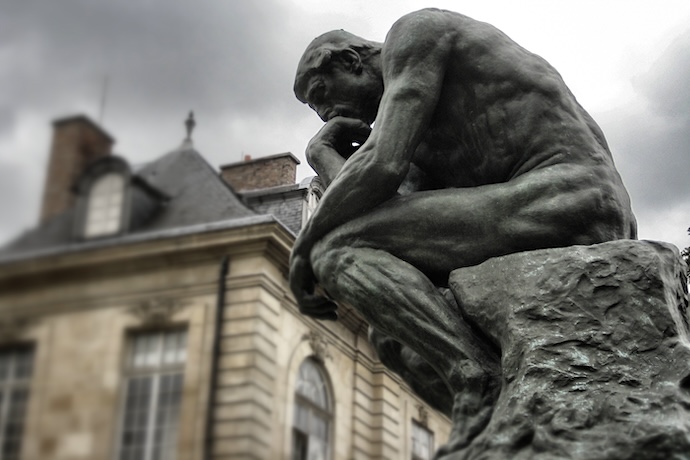Last December, the evangelical organization Alliance Defending Freedom filed a lawsuit challenging Colorado’s ban on conversion therapy, claiming that it violates freedom of speech. Conversion therapy, or the fraudulent practice of trying to change a person’s sexual orientation, gender identity, or expression through physically and psychologically abusive methods, still remains legal in 18 states, not including states with partial bans or states whose bans are tied up in the courts.

Shame-Sex Attraction
Survivors’ Stories of Conversion Therapy
Lucas Wilson
Jessica Kingsley Publishers
Jan 21, 2025
As a queer woman who studies LGBTQ+ religious trauma, I was eager to sit down with Wilson and learn what sparked Shame-Sex Attraction and what he hopes these poignant portrayals of religious abuse will have on survivors, leaders, and legislators. During the course of our conversation, we talked about Christian rebranding, colonization, and conversion as a large-scale queerphobic social practice.
The interview has been edited for length and clarity.
What are some of the throughlines or themes related to political and religious movements in the United States?
Of the 17 stories, the vast majority are from evangelical or White Christian fundamentalist spaces, which aligns with the disproportionate prevalence of conversion practices in these contexts. I would also say that shame, which is a theme throughout, is what brings people into conversion therapy. There are, of course, some folks who are forced into it, but many go in “voluntarily” (we can talk about agency within these religious systems later), and shame is one of the most significant factors that bring people in.
Shame is also the number one fruit of these experiences. No one would struggle with so-called same-sex attraction, if they hadn’t been made to struggle by religious institutions, by politicians, by whomever. It’s the result of this anti-trans and anti-queer rhetoric in societal circulation that undergirds such shame—and conversion practices then amplify this shame.
How do you see changes in conversion therapy or discussions for conversion therapy over time, particularly with the recent far-right shift in the United States?
If you see it from the outside, you don’t necessarily immediately know they’re talking about homosexuality. You have to do some digging to find out what they’re talking about. But they don’t call it “conversion therapy.” They call it “pastoral counseling.” They call it “biblical counseling,” “biblical worldview counseling,” using obfuscating language and euphemisms to mask the work they’re doing because they know they’ll catch heat for practicing conversion therapy overtly.
Because they’ve changed the language, they might try to claim they’ve changed their practices as well: “Oh, we’re not seeking heterosexuality. We’re seeking wholeness.” In order to achieve this spiritual wholeness, one must not identify as gay, lesbian, bi, or trans. It’s precisely the same thing, just wrapped in different language.
Dr. Sara Moslener explored elements within purity culture of racism, ableism, and transphobia in her podcast Pure White. How do you see those as part of, or how does your collection explore, if it does, those elements of overlap?
As I say in the afterword of Shame-Sex Attraction, I regret not presenting a more diverse collection when it comes specifically to race and ethnicity, especially because people of color are disproportionately affected by conversion practices. Although this reality isn’t represented in the book by way of included stories, it is important to acknowledge. But to answer your question about how this relates to race, I think it’s important to discuss first how conversion therapy fits into the larger Christian enterprise of conversion.
Coercive conversion and proselytizing are predicated upon superiority—the desire for a homogenous Christian world. For some Christians, this superiority entitles them to mold others in their image—sometimes through violent means—to behave or act like straight, White Christian followers. As such, this coercive practice of conversion is a colonizing effort. It’s the effort to take over others, bring them into the camp, and change them into their own likeness.
Why is it important to give voice to the dangers of conversion?
I don’t think that anyone who needs to read this collection will read it. Of course, I would love that to be the case, but that’s not likely. I do, however, think the collection is important for survivors themselves. There are so many folks who’ve undergone conversion therapy, survived, and are now picking up the pieces. I hope this collection makes its way into their hands. For these folks to see themselves in it is super important.
Not all queer folks have undergone conversion therapy (or what has been traditionally understood as conversion therapy), but I would say that all queer folks have experienced conversion practices like, for instance, if mom or dad corrected how they sit, how they talk, smacked them for playing with a toy that’s not “appropriate” for their sex assigned at birth, whatever it might be. Queer folks throughout their lives have received explicit or implicit messages from a number of people—especially those who are influential in their lives—that constitute conversion practices. So this collection is for the queer community in general, for those who’ve undergone conversion therapy but maybe don’t identify as such, and for people who identify as conversion-therapy survivors.


